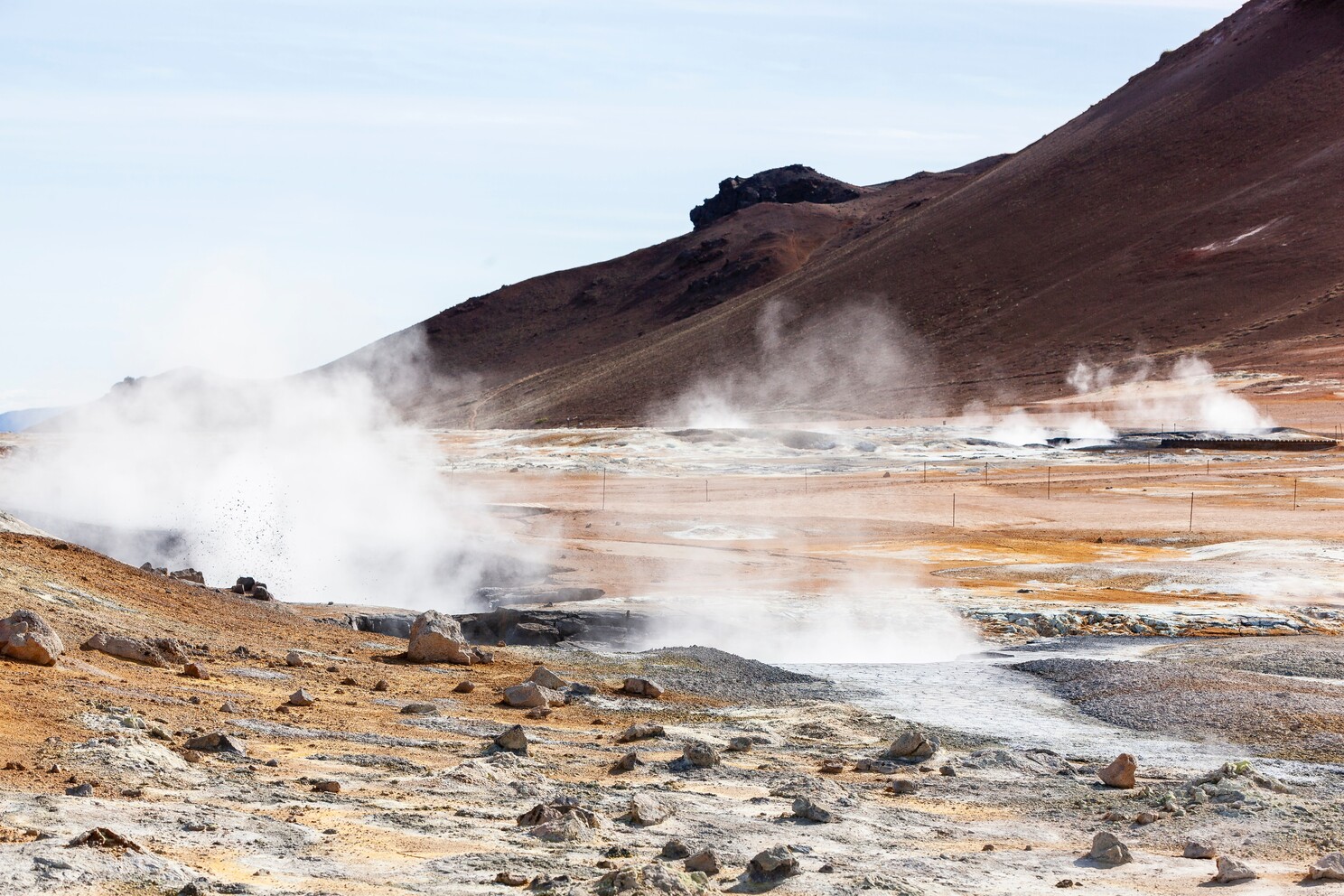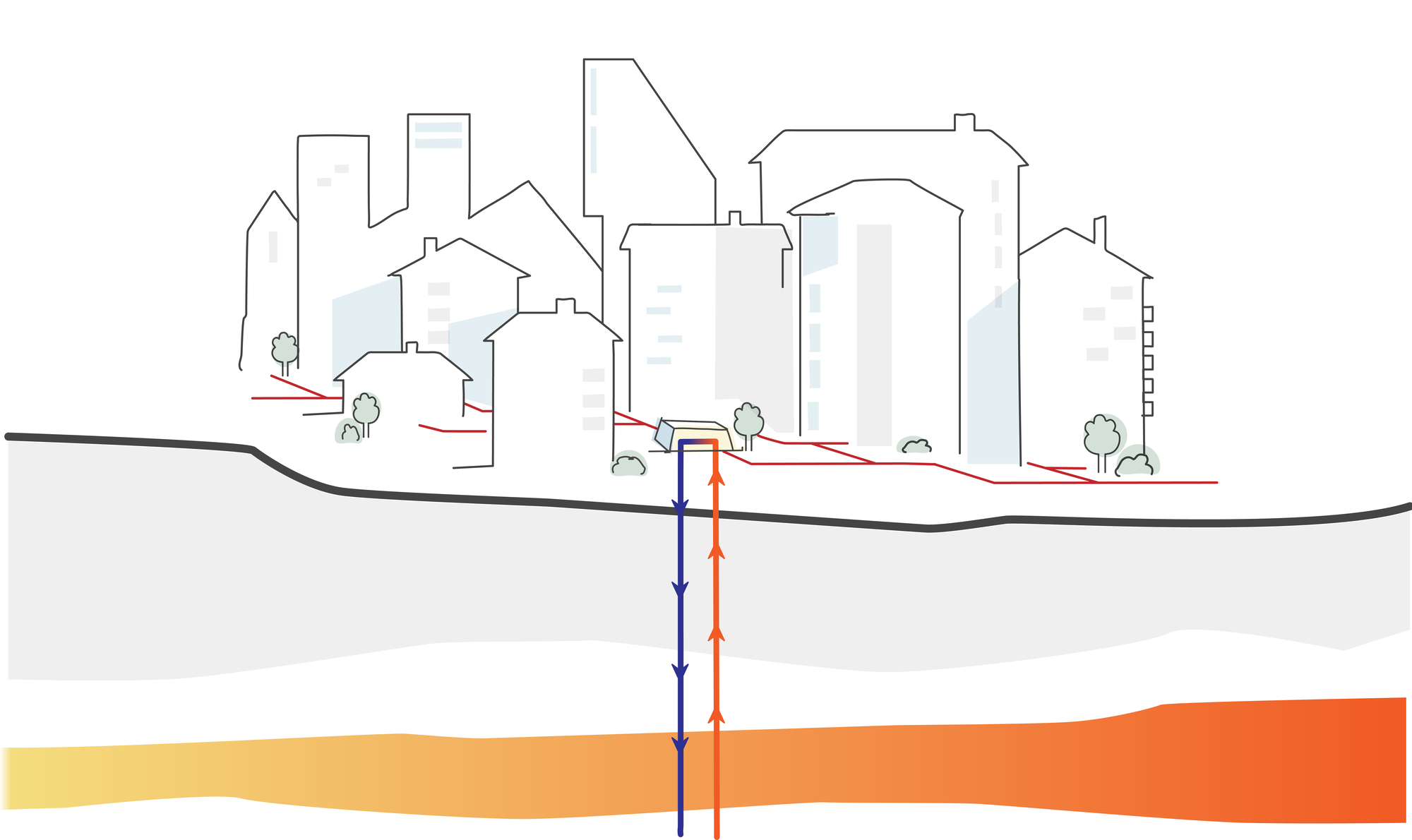
Heat with no fire
For hundreds of thousands of years, we have heated our caves and buildings with fire, using the planet’s resources and creating emissions to provide comfort and convenience. What if sustainable technology could heat our homes without starting a fire?
Every day, we emit 93 million tonnes of carbon dioxide from fossil fuel combustion[1]. It’s draining our resources and warming our planet – and global emissions are still growing.
One solution could literally be right under our feet. Geothermal energy – extracting hot water from the subsurface, harvesting the heat energy generated by the Earth, and returning it at a lower temperature – has the potential to meet a significant part of global demand for heating, with zero impact on the planet.
“There is so much heat in the molten core of the planet. It’s just a question of how we can best harness it,” says Hildigunnur Thorsteinsson, Chief Technical Officer of Innargi, a Danish geothermal heating company.
“The power beneath our feet is an invisible resource, as you can’t see or feel it in the same way as wind and solar. Yet it’s incredibly efficient because you are converting heat to heat, rather than electricity to heat.”

From Iceland to the rest of the world
Heating and cooling account for 50% of energy consumption in the European Union[2] but until now, there has been little attention on moving the power source away from burning fossil fuels. District heating, warming thousands of homes on a single system, is usually powered by burning waste, biofuels, natural gas or coal – all with an impact, to differing degrees, on the environment.
In a geothermal system, hot water is pumped up from the underground and the energy is transferred to a district heating grid, warming thousands of homes, offices and factories. If the water from the subsurface is not quite hot enough for district heating, heat pumps deliver the final degrees. Finally, the cooled water is returned to the subsurface.

Geothermal energy is common in Thorsteinsson’s home country Iceland, where it heats some 90% of all homes. It is an easily accessible energy source because Iceland has extensive volcanic activity and hence hot water close to the surface.
The right conditions exist for geothermal energy in many places around the globe, though usually at lower temperatures or deeper than in Iceland, so the question is how to access and return it. That is addressed through seismic mapping, to get an idea of the structure of the subsurface and to be sure there is no seismic activity, and then drilling to prove the presence of water and at what temperature.
“Heating has not had a great deal of focus when we have been discussing the energy mix needed to address the climate crisis. Everyone has been talking about electricity,” Thorsteinsson says. “This is now changing and the growing emphasis on security of local energy supply has accelerated the shift.”
Using old knowhow in new ways
The water extraction technologies draw on many years’ experience built up in drilling for oil and gas, and many professionals from this industry are now applying their expertise to developing geothermal energy.
“It’s very satisfying to take my experience and match it up with the vast oil and gas experience of my colleagues. These were separate industries but there is a lot we can learn from each other, in terms of geology and how to take out and return fluids and how to deal with them during the process,” Thorsteinsson says.
“Combining the technology from both sides helps to do this in a more efficient and cost-effective way. It’s so exciting to be at the forefront of a new industry.”
About Innargi
Innargi is a geothermal heating company aiming to heat millions of urban homes while leaving zero impact on our planet. Geothermal energy is a large renewable energy source originating from the Earth’s interior. By unearthing the subsurface heat – similar to how we harness energy from sun and wind – it can serve as a sustainable heating alternative to fossil fuels such as coal, gas, and biomass. Innargi was established by A.P. Moller Holding in 2017 and is part of the A.P. Moller Group. Learn more at innargi.com.
[1] Source: International Energy Agency
[2] Source: EU